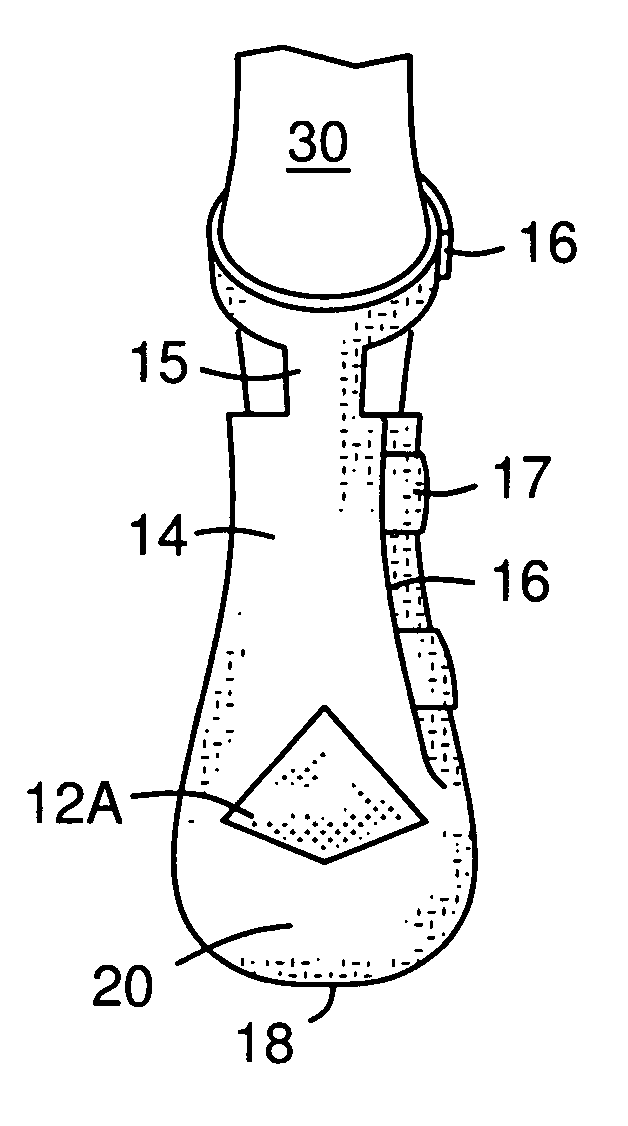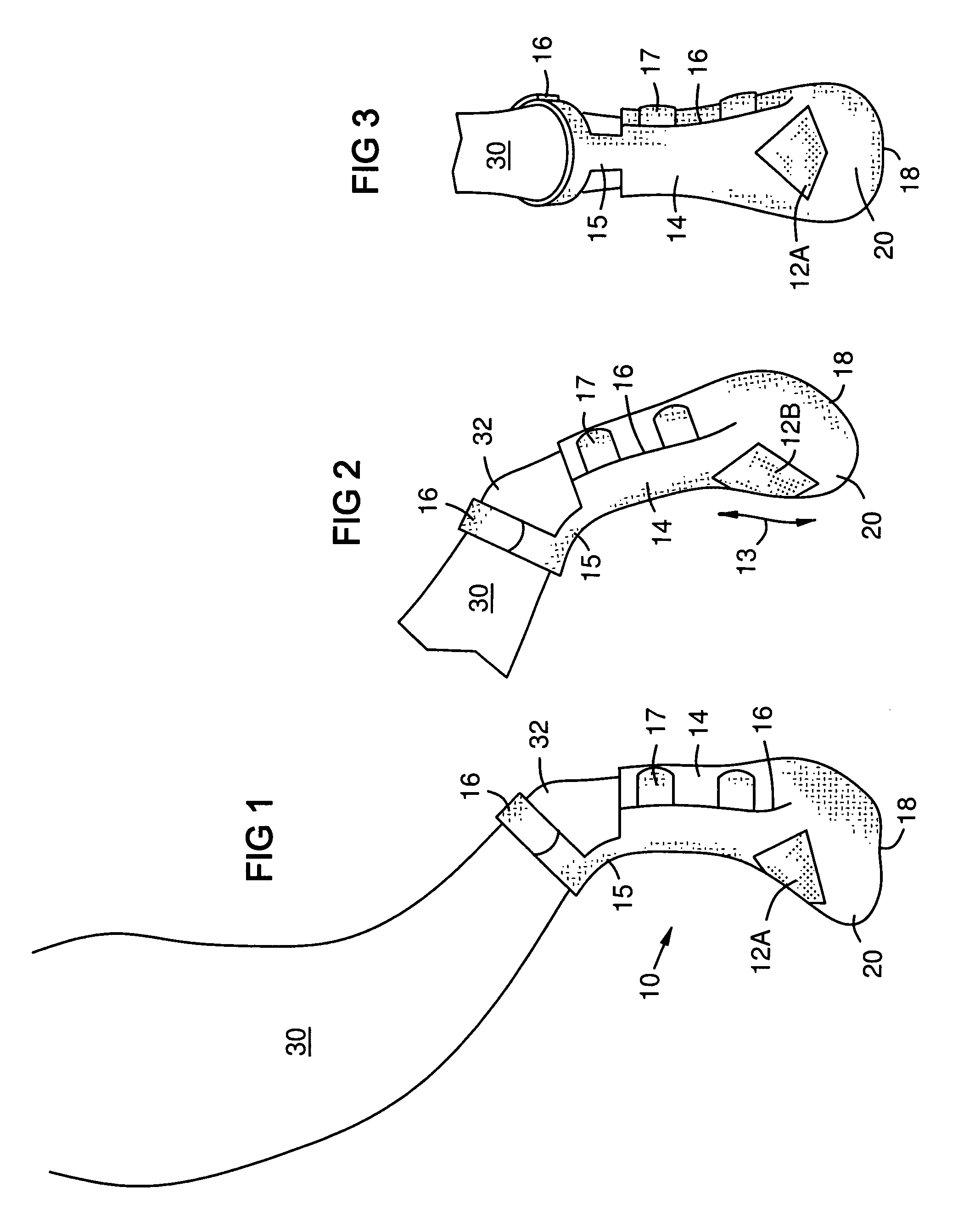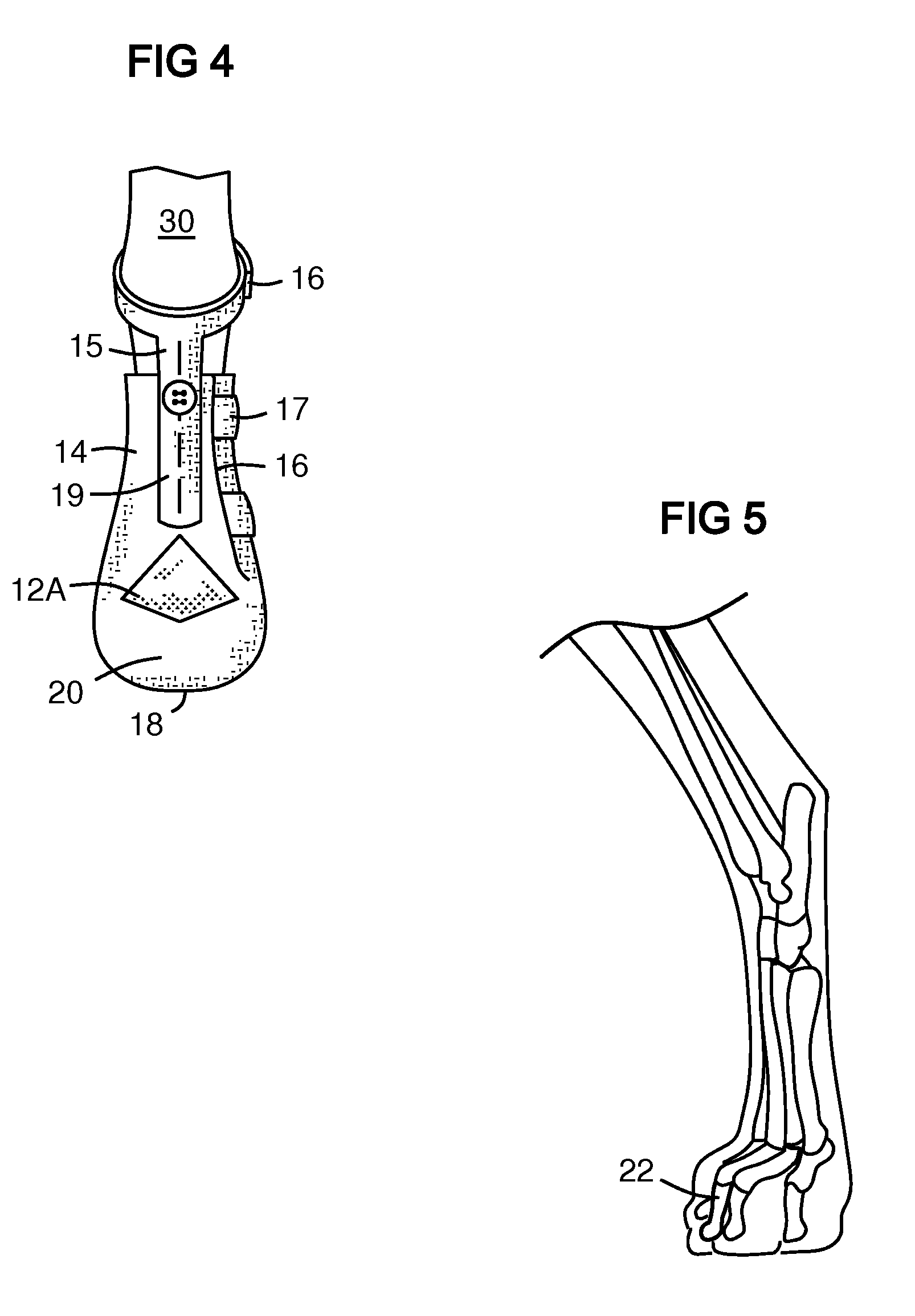Orthopedic boot for animals
a technology for animals and boots, applied in animal husbandry, medical science, veterinary instruments, etc., can solve the problems of low stability, no elastic insert on top of the toe box, etc., and achieve the effect of controlling the down-ward flexion of the foo
- Summary
- Abstract
- Description
- Claims
- Application Information
AI Technical Summary
Benefits of technology
Problems solved by technology
Method used
Image
Examples
Embodiment Construction
[0013]The invention is designed to provide stability to a foot damaged either muscularly or neurally, and that is therefore difficult for a dog to control in natural ambulation. In addition, it gives an upward assist to the front of the foot, and allows proper, or near proper, placement of the palmar surface on a walking surface. Its main force advantage is provided by an elastic insert above the toe box. The elastic serves to elevate the front of the foot after a step has been taken with the affected limb. The boot prevents curling under or “knuckling” of the foot and dragging of the toe nails of the affected limb on the ground.
[0014]FIG. 1 shows a hind leg 30 of a dog with a boot 10 according to the invention. The boot may be constructed mainly of a layer 14 of fabric, leather, or other material as known for use in shoe uppers that is flexible, but not highly elastic. This material provides a balance of comfort and support to the injured foot. Low elasticity helps retain the shape...
PUM
 Login to View More
Login to View More Abstract
Description
Claims
Application Information
 Login to View More
Login to View More - R&D
- Intellectual Property
- Life Sciences
- Materials
- Tech Scout
- Unparalleled Data Quality
- Higher Quality Content
- 60% Fewer Hallucinations
Browse by: Latest US Patents, China's latest patents, Technical Efficacy Thesaurus, Application Domain, Technology Topic, Popular Technical Reports.
© 2025 PatSnap. All rights reserved.Legal|Privacy policy|Modern Slavery Act Transparency Statement|Sitemap|About US| Contact US: help@patsnap.com



